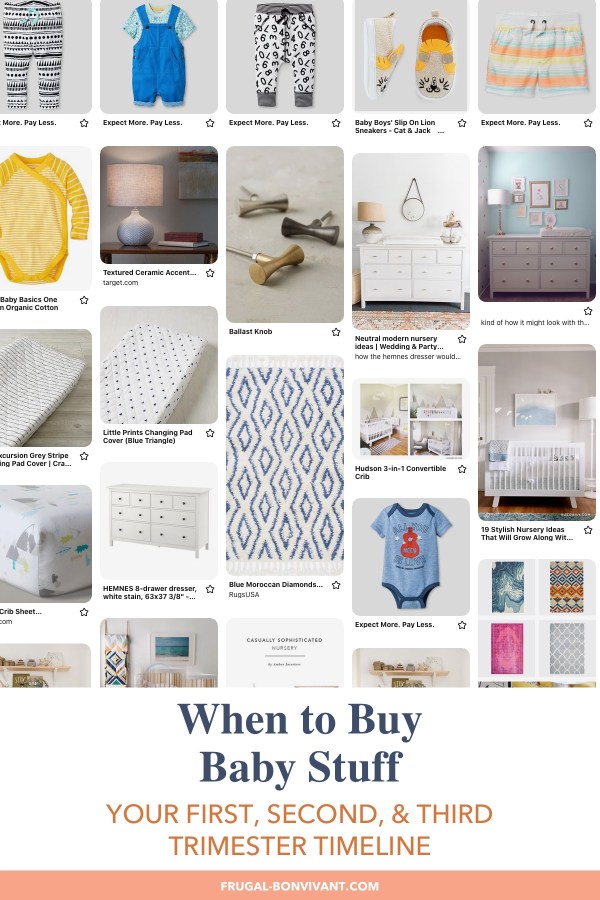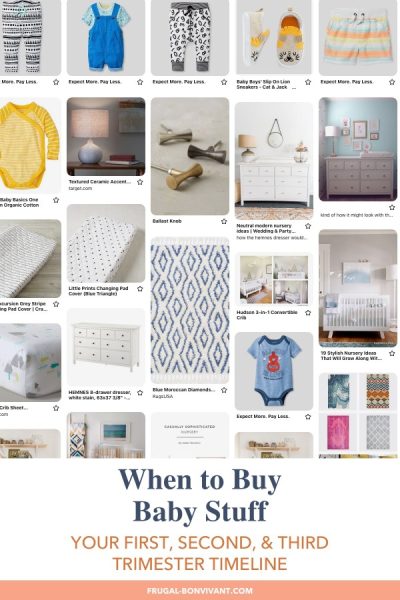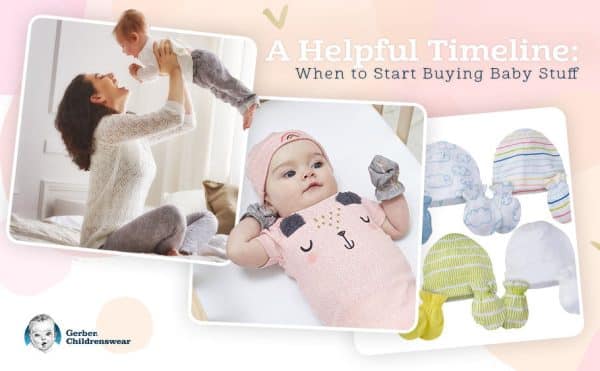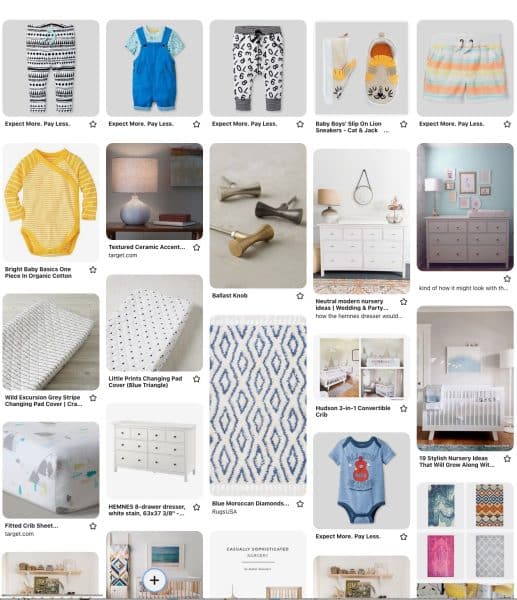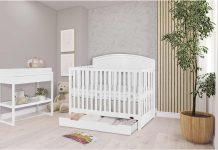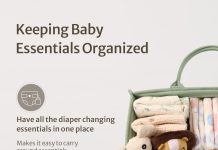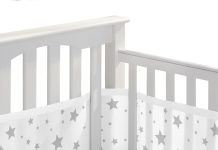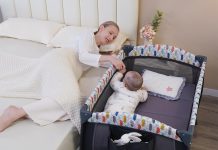Thinking about when to start buying a baby crib can be an exciting and overwhelming experience for new parents. It’s never too early to start considering your little one’s sleeping arrangements, but it’s also important to strike the right balance. In this article, we’ll explore the factors to consider when determining the best time to begin this essential purchase, ensuring that your baby’s journey into the world is filled with comfort and safety.
This image is property of i0.wp.com.
Review contents
Factors to Consider
Age of the Baby
When it comes to buying a baby crib, the age of the baby is an important factor to consider. Newborns typically sleep in bassinets or cribs with adjustable heights that allow for easy access to the baby. As the baby grows older and gains mobility, a larger crib becomes more suitable. So, it is crucial to evaluate the age of the baby and determine the appropriate size and design of the crib that will meet their needs and ensure their safety.
Gestation Period
For expectant parents, considering the gestation period is essential when deciding when to start buying a baby crib. It is recommended to start planning and purchasing nursery items towards the end of the second trimester or early third trimester. This allows enough time for shopping, assembling the crib, and organizing the nursery without adding unnecessary stress to the final weeks of pregnancy.
Budget and Preparation
Another factor to consider is the budget and the level of preparation needed before buying a baby crib. It is important to establish a realistic budget and allocate funds for the crib, mattress, bedding, and any additional nursery items. By planning ahead and setting a budget, parents can make informed decisions and ensure they are financially prepared to create a comfortable and safe environment for their baby.
Safety Precautions
The safety of the baby should always be a top priority when buying a baby crib. Parents should look for cribs that meet the current safety standards, have proper hardware and construction, and feature safety features such as adjustable mattress heights, sturdy railings, and safe finishes. It is also crucial to follow the manufacturer’s instructions carefully when assembling the crib and regularly inspect it for any signs of wear or damage.
Storage Space and Assembly
Available Storage Space
Before buying a baby crib, consider the available storage space in your home. Baby cribs can take up a significant amount of space, so it is important to measure the intended area and ensure that it can accommodate the crib comfortably. If space is limited, there are options available such as portable or foldable cribs that can be easily stored when not in use. Assessing the storage space helps avoid any unnecessary inconvenience or clutter in the nursery.
Assembly Time and Effort
Consider the assembly time and effort required for the chosen baby crib. Some cribs come with complex assembly instructions and may require multiple people to set up. For busy parents or those who are not inclined towards DIY tasks, it may be wise to choose a crib that is easy to assemble and does not consume an excessive amount of time. Prioritizing convenience in the assembly process can make the overall experience much smoother and stress-free.
Product Research and Preferences
Researching Different Options
Conducting thorough research on different baby crib options is essential in making an informed purchasing decision. Look for cribs from reputable brands that have a good track record, positive customer reviews, and meet the necessary safety standards. It is also beneficial to compare features, prices, and warranties offered by different manufacturers. Researching online, visiting retail stores, and seeking recommendations from other parents can provide valuable insights and help narrow down the choices.
Colors and Designs
Consider the colors and designs that align with your personal preferences and the overall nursery theme. Baby cribs are available in various colors and designs, ranging from traditional to modern. Choosing a crib that complements the nursery decor can add an aesthetically pleasing touch to the room. Additionally, certain designs may incorporate features like built-in storage or convertible options that can enhance the functionality and longevity of the crib.
Buying New or Second-hand
Advantages of Buying New
Opting for a brand new baby crib has its advantages. New cribs typically come with warranties, ensuring that any manufacturing defects or problems will be addressed by the manufacturer. Additionally, buying new allows parents to select the latest models that meet current safety standards. There is also the satisfaction of knowing that the crib is clean, unused, and tailored specifically for the baby.
Benefits of Buying Second-hand
Buying a second-hand baby crib can be a budget-friendly alternative, especially for parents who are on a tight budget. However, there are some important considerations to keep in mind. Make sure the crib meets the necessary safety standards and has not been recalled. Thoroughly inspect the crib for any damages or wear and tear. Additionally, consider the cleanliness and overall condition of the crib to ensure the baby’s well-being. Buying second-hand can be a viable option if done with caution and careful evaluation.
This image is property of cdn.shopify.com.
Availability and Delivery
Product Availability
Check the availability of the chosen baby crib before making the purchase. It is advisable to have multiple options in mind to avoid disappointment if a particular crib is out of stock. Shopping early and keeping track of the availability can prevent any delays in setting up the nursery and ensure that the desired crib is ready for the baby’s arrival.
Delivery Time
Consider the estimated delivery time when ordering a baby crib, especially if it needs to be shipped. Depending on the location and logistics, delivery times can vary, and it is important to factor that into the overall timeline of nursery preparation. Ordering well in advance allows for any potential delays and ensures that the crib arrives in a timely manner.
Creating a Nursery
Creating a Relaxing Environment
Designing a nursery that creates a calm and soothing environment is crucial for the baby’s well-being. Consider the color scheme, lighting, and overall ambiance when selecting the crib and other nursery essentials. Soft, neutral tones and dimmable lighting can contribute to a tranquil space that promotes relaxation and better sleep for both the baby and parents.
Choosing Compatible Furniture
When selecting a baby crib, it is essential to choose compatible furniture that complements the crib’s design and purpose. Consider other furniture pieces such as a changing table, storage solutions, and seating options for parents. Ensuring that the furniture pieces harmonize in terms of style and functionality helps create a cohesive and functional nursery setting.
This image is property of i0.wp.com.
Safety Standards and Certifications
Checking Safety Standards
Make sure to check if the chosen baby crib meets the required safety standards. Look for certifications such as the JPMA (Juvenile Products Manufacturers Association) seal, which ensures that the crib has undergone rigorous safety testing. It is also helpful to read reviews and opinions from other parents who have used the specific crib to gain insights into its safety features and durability.
Looking for Certifications
In addition to safety standards, consider looking for certifications related to environmental sustainability and non-toxic materials. Certifications such as GREENGUARD GOLD or Oeko-Tex can provide assurance that the crib meets specific health and safety criteria, ensuring a healthier environment for the baby.
Other Essential Baby Items
Considering Additional Necessities
In addition to a baby crib, there are several other essential items to consider when preparing for the arrival of a baby. These may include a crib mattress, bedding, a changing table, a baby monitor, and storage solutions. Assessing the needs and preferences of the parents helps create a comprehensive checklist to ensure that all essential baby items are acquired in a timely manner.
Creating a Checklist
Creating a checklist of essential baby items can be incredibly helpful in organizing and prioritizing the shopping process. Include items such as diapers, clothing, feeding supplies, and toiletries alongside the crib-related essentials. A checklist keeps the parents focused and gives a sense of accomplishment as items are checked off, making the preparation phase more manageable and less overwhelming.
This image is property of www.amishoutletstore.com.
Practicality and Adaptability
Longevity of Use
Consider the longevity of the baby crib when making a purchase decision. Many cribs are designed to convert into toddler beds or even full-size beds, extending their usage as the child grows. Investing in a crib that can adapt to the changing needs of the child can be a practical choice, saving money in the long run.
Adjustability and Convertibility
Look for cribs that offer adjustable mattress heights to accommodate the baby’s growth and movement. Some cribs also have adjustable railings or removable side panels, making it easier for parents to access the baby or convert the crib into a toddler-friendly configuration. These adjustable and convertible features enhance the overall functionality and convenience of the crib.
Advice from Experienced Parents
Seeking Advice from Parents
Seeking advice from experienced parents can provide valuable insights and tips when buying a baby crib. They can offer practical advice on what features to look for, which brands are reliable, and how to evaluate the safety and comfort aspects of the cribs. Engaging in parenting communities or discussing with friends and family who have recently gone through the process helps gather diverse perspectives and recommendations.
Gaining Insights from Personal Experiences
Personal experiences of other parents can be a valuable source of information when it comes to choosing a baby crib. Listening to stories about what worked well for others, as well as their challenges and regrets, can help avoid potential pitfalls and make more informed decisions. Every baby and family is unique, and hearing firsthand experiences helps assess different options and tailor the crib selection to suit individual preferences and needs.
In conclusion, buying a baby crib involves careful consideration of various factors. From the age of the baby to the assembly process, storage space, and personal preferences, each aspect plays a significant role in creating a safe and comfortable environment for the little one. Remember to prioritize safety standards, look for certifications, and seek advice from other parents to make the best decision. With thoughtful planning and research, parents can confidently choose a baby crib that meets their needs and ensures a cozy and secure space for their baby to sleep and grow.
This image is property of mommyonpurpose.com.

